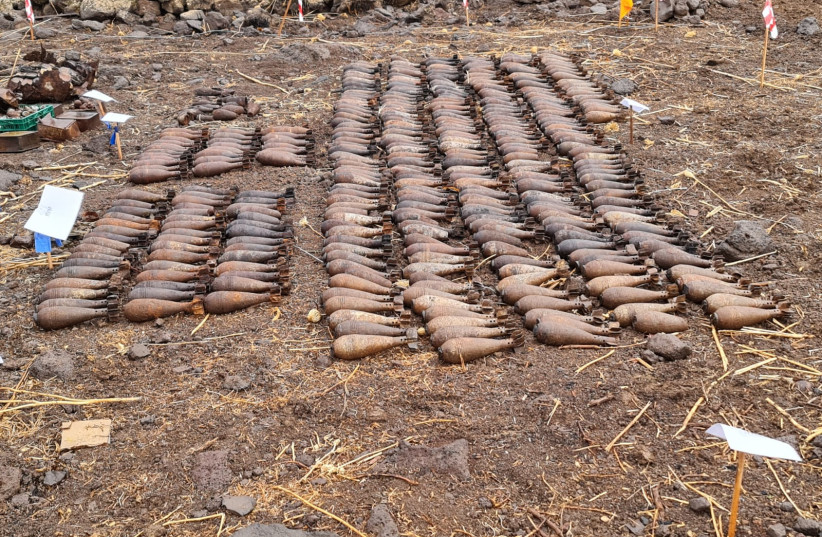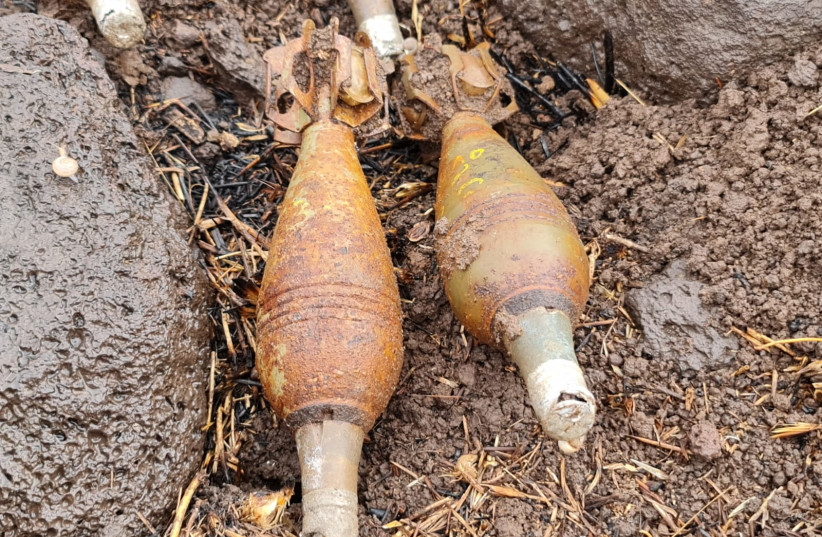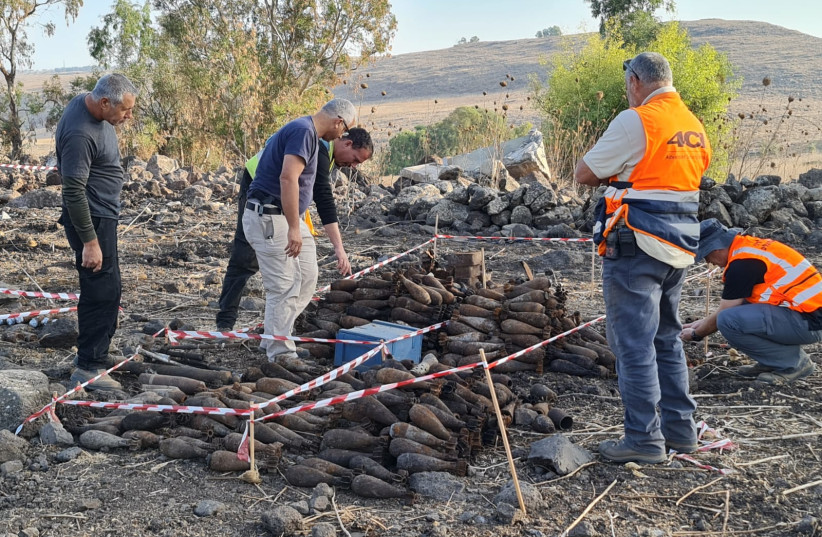A huge Syrian bunker full of ammunition from the Six Day War has been uncovered in the Golan Heights by the Defense Ministry’s Mine Action Authority.
The bunker was laden with hundreds of rounds of ammunition, mortar bombs of various diameters, pyrotechnics, explosives and more. All were found in bulk and in their original packaging.
The ammunition was collected by authorities and transported under strict safety rules prior to its destruction.
The Syrian outpost at Mitzpe Gadot, known as “El Murtafa,” was one of the most fortified outposts belonging to the Syrian Arab Army on the Golan Heights before the war in 1967, and it was from there that Syrian soldiers fired toward Israeli communities in the Hula Valley.
Thousands of mines from the period remain scattered in the fields surrounding the outpost, which serves today as a memorial site for the IDF’s Alexandroni 3rd Brigade that was the first to break through the Syrian lines in the Golan Heights.

The bunker was discovered after the authority recently began work to clear mines in the area in order to make the tourist location safer for those who visit.
The Mine Action Authority has been operating since 2012 and is responsible for clearing minefields that are no longer necessary. Since its inception, the authority has cleared some 1,500 hectares (3,700 acres) of minefields and other landfills.
Over the past year, the authority has operated at a number of sites throughout the country, including the Golan Heights, the Jordan Valley and the northern Negev.

While there are some 3,300 hectares (8,150 acres) of known minefields, there are still some 9,000 hectares suspected of being mined throughout the country, mainly in open fields in the Golan Heights, the Arava and on Israel’s borders.
Many areas in the heights were once part of Syria, and as the mines laid by Syrian forces remain largely unknown, those areas have been fenced off by the IDF. But the fencing is not always properly maintained, allowing for uninformed civilians to cross into the minefields.
There are thousands of other mines planted by Israel to thwart invading soldiers and tanks during the first decades of the state’s existence. While the IDF has continued to dismantle minefields, the Defense Ministry is also intent on removing the remaining mines so that more territory will be safe for citizens to hike and travel.

While Israel is a member of the Convention on Conventional Weapons and its Amended Protocol II on land mines, it has not signed the 1997 Ottawa Convention on the Prohibition on the Use, Stockpiling, Production and Transfer of Anti-Personnel Mines.